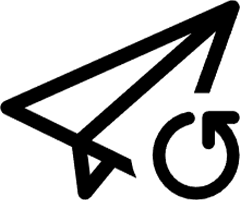By Bethanie Hestermann
Are you Team Glamping, or do you find anything less than sleeping on the ground under the stars to be frivolous? “Glamping” is a legit word now (with its own Merriam-Webster dictionary entry!), and as an activity, it’s really popular. The global glamping market brought in more than $2 billion last year, and it’s expected to grow significantly in the next several years.
The official definition of glamping is camping with some amenities, but in real life, the term is often used to describe camping with comforts that go a bit beyond basic amenities. For instance, glamping may involve yurts, safari tents, cabins, or fancified Airstreams for rent instead of your typical two- or four-person tents. Glampers may enjoy amenities like Wi-Fi connectivity, hot tubs, or even hotel-style maid service.
So that tiny cassette toilet inside your pop-up camper trailer … basic amenity or frivolous comfort? Camping or glamping? What falls under camping and what falls under glamping is up to interpretation. For our purposes, let’s say glamping is not fully roughing it, but it’s not a five-star hotel or lavish teepee Airbnb thing either—it’s somewhere in-between.
Are you Team Glamping or Team Camping? Let’s examine some of the pros and cons of glamping.
Team Glamping
If you’re on Team Glamping, you like the outdoors—you may even love it—but with an asterisk. The footnote may read something like: You like/love the outdoors, but mostly still want to live indoors. Fair enough! If you’re in this camp, you’ll agree with the following.

Pros of glamping:
- Toilets. When you’re glamping, you don’t need to poop in a hole you dig yourself. (So fancy!)
- Showers. Glampers usually don’t need to take a bird bath in a bucket of cold water or dig through their car for spare coins to operate those iffy campsite showers.
- Mattresses. Glamping in the wilderness shuts down the notion that one must sleep on the ground (or an air mattress that deflates by 2 AM) to spend quality time in the great outdoors.
- Climate control. If your accommodation has A/C and/or heat, camping season is any season!
- Meal prep and storage. Glampers may have access to a full-size fridge, counter space, and cooking methods that do not include an open flame. (Although with SetPower fridges and freezers, campers and glampers alike can store food in style!)
Team Camping
If you’re a devoted fan of the sleeping-bag-on-the-ground approach, you may be Team Camping. You’re likely to see the following as shortcomings of camping’s glamorous cousin, glamping.
Cons of glamping:
- Cost. Glamping is most likely going be more expensive than your traditional camping trip. (UNLESS you’re comparing renting a cabin for one weekend a year to buying all camping gear from scratch.)
- Less of an “unplug” from daily life. If glamping comes with uninterrupted Wi-Fi and a flat-screen TV, are you really getting away from it all?
- Location restrictions. If your setup can’t move (like a yurt or cabin), or if you’re restricted to campsites with hookups, you can only camp where the support for your amenities exists—and that leaves a lot of wild places left unexplored.
- You can’t get your MacGyver on. Traditional camping often means you need to use whatever resources you have to make stuff work—and that can be a beneficial, even fun exercise. The confidence you gain from “figuring it out” while camping may even spill over into regular life.
Ready, Set, Go Camp or Glamp
There’s no one-size-fits-all experience for campers and glampers. For the hard-core backpackers among us, any sort of water spicket or flushing toilet may qualify as glamping. For many others, glamping is only really “glamping” if there’s a distinct hotel-y vibe to the situation.
No matter how you like to camp (or glamp), if you’re changing your scenery and enjoying nature without doing damage to it, you’re doing it right. Glamp on.







